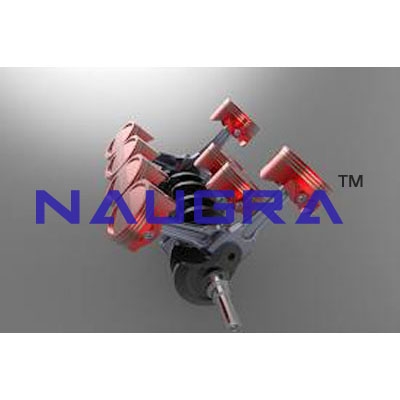- Civil Lab Mechanical Lab Engineering Lab Equipments
- sales@didacticlabequipments.com

CAT NO: DIDACTICNLE-Export-004006
Crank And Connecting Rod.
Crank And Connecting Rod Science Labs
Features:
Low cost, effective teaching
Self contained
Easily seen from a distance
Mechanism clearly understandable
Loci drawn for further study
Standard mechanism for rotary to linear conversion
Three year warranty
Range of Experiments
To determine the loci of the moving parts of the standard mechanism
To establish the characteristics of that mechanism: for example to see
which links move faster than other or whether a particular motion (such
as a straight line) is developed
Description
One of sixteen mechanisms built on an A3 board equally suitable for the
classroom, drawing office or laboratory. The principal components are
made from amber coloured Perspex, pivoted with hollow rivets, and
mounted on a white melamine board for contrast and visibility. To see
the mechanisms move is far more instructive and convincing than
listening to a static lecture. The hollow rivets accept a pencil for
transferring the loci of the joints to a sheet of paper, clipped to the
board.
This common mechanism is extensively used for converting rotary to
reciprocating motion and vice versa. The connecting rod is attached at
one end to a rotating arm and at the other to a combined slider and
turning pair.
This equipment is part of a range designed to both demonstrate and
experimentally confirm basic engineering principles. Great care has been
given to each item so as to provide wide experimental scope without
unduly complicating or compromising the design. Each piece of apparatus
is self-contained and compact. Setting up time is minimal, and all
measurements are made with the simplest possible instrumentation, so
that the student involvement is purely with the engineering principles
being taught.
Each mechanism is supplied with a manual which gives full instructions
for producing the loci and applications of the assembly. The typical
graphical result is appended.
